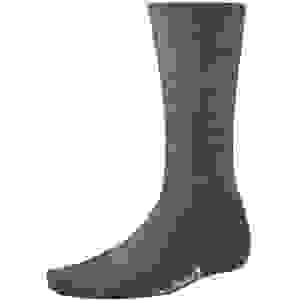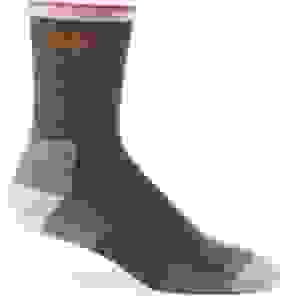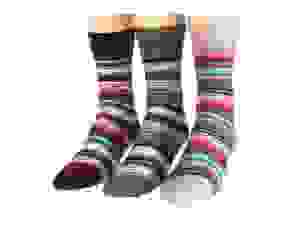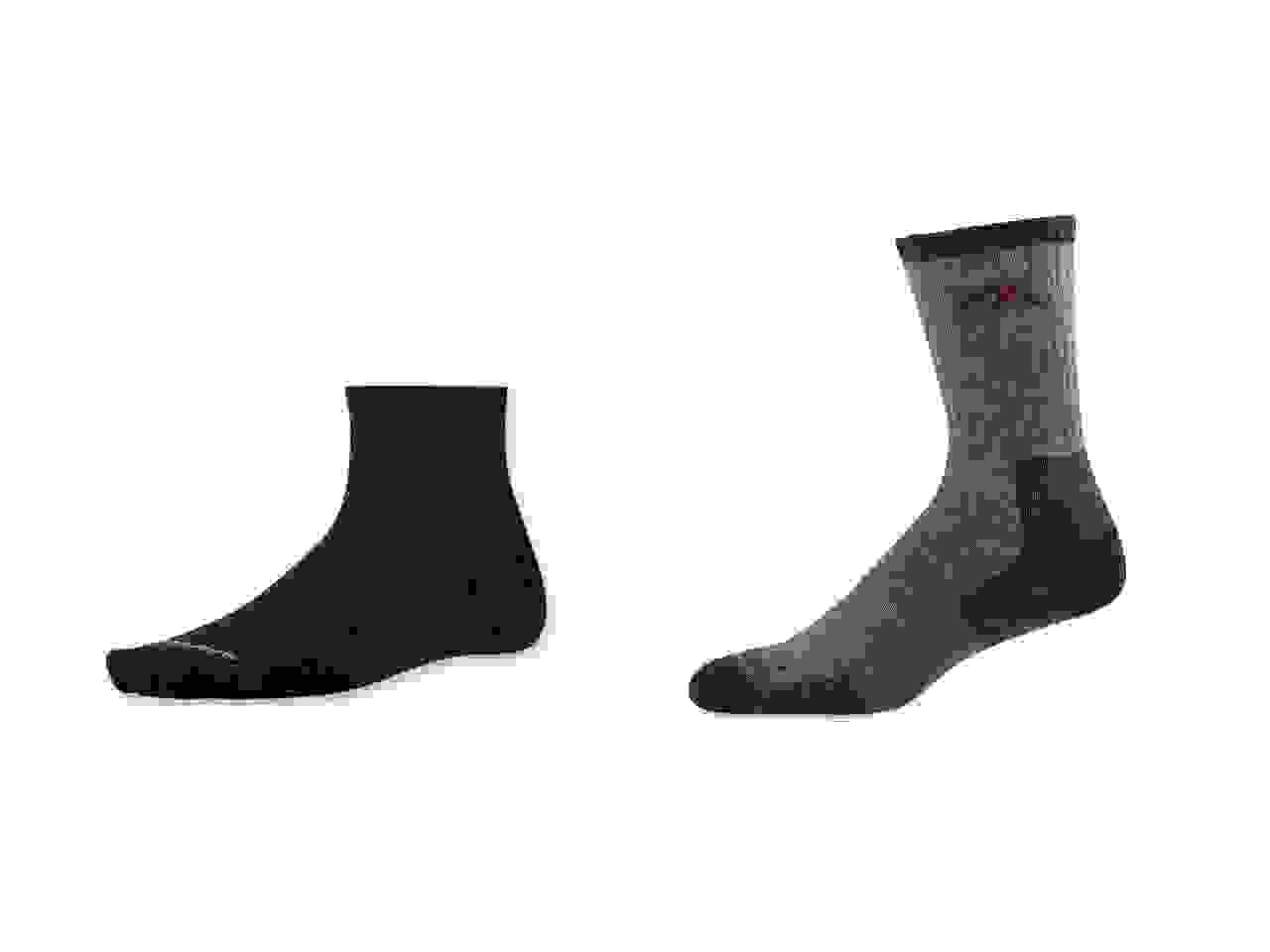As much as I would love to imagine myself as a stalwart and courageous swashbuckling voyager, sailing the seven seas with magnanimous adventures of legendary renown, I am in fact a scrawny, spindly creature of skeletal countenance and atrocious constitution. Without the technological marvels of high-quality travel gear, I would have devolved into a rapidly decaying husk of a man amongst the snowbanks of an obscurely bucolic countryside long ago.

Luckily for you, my frozen toes and irreversibly chilled bones instilled within me the steely resolve to persevere, and thus did I begin my long and arduous journey to discover nothing but the world’s finest garments, wrought from the hands of humanity’s most skilled craftsmen, never to be caught in a meteorological maelstrom of biblical proportions with inadequate gear ever again.
And it is this wisdom which I choose to bestow upon you today. I have suffered for you, my children. But I ask of you no gifts in return. Your worship and adoration are thanks enough.
Today’s lecture: A treatise on the fabulousness of merino wool socks, and why they are far and away the best travel socks you can reasonably find. There’s no better way to pamper yourself more adorably than swaddling your toes in the exquisite comfort of fluffy merino. Allow me to elaborate.
What makes merino wool socks so great?
People talk about merino wool like it’s a miracle fabric, because it basically is. Merino has a number of properties that make it especially comfortable, particularly when compared to more familiar fabrics like cotton.

Properties of merino wool include:
- It’s an excellent insulator, and will help keep you warm in winter, and cool in the summer.
- It can absorb a significant amount of moisture, but since it’s the interior of the fiber where the moisture resides, the fabric feels dry, even when wet. It will eventually get over-saturated, but it’ll take a lot longer than either cotton or synthetic fabrics, which quite often feel like you’re wearing a wet garbage bag.
- It stays warm even when wet, which is something cotton simply can’t accomplish, preventing the chill of wet fabric that is typical of other fibers.
- It dries quickly. Depending on fabric weight and other factors, it can even match the quick-drying performance of certain synthetic fabrics, or come close.
- It’s naturally anti-bacterial. The structure and chemical properties of merino wool create a horrible environment for microorganisms, which also means…
- It’s naturally odor-resistant. Because most body odor is actually caused by bacterial waste products, the naturally anti-bacterial products prevent this odor from building in the first place.
- It’s ridiculously soft. This will depend on the specific fibers used (you’ll read about microns sooner or later; anything under 20 will be luxurious), but it’ll be as soft as the softest brand-new cotton you’ve ever felt.

These properties are useful for all sorts of clothing, but especially helpful for socks: They’ll keep your toes warm, but with less likelihood of overheating. They’ll absorb moisture, meaning your feet won’t feel nearly as soaked under bulky shoes. They’ll air-dry rather quickly if you take your shoes off for a break, and, perhaps best of all, they won’t offend the nasal passages of passersby when you do.
Oh, and I forgot about blisters. Literally. Merino wool socks work spectacularly well at preventing them, and I’ve been using merino wool socks for so long that I can’t even remember them.
What makes them the best travel socks?
Travel brings with it certain limitations. Namely, a frequent lack of adequate laundry facilities. This is where merino wool shines.
Because of its natural anti-bacterial properties, washing merino wool on a daily basis isn’t absolutely necessary; after letting it air dry overnight while you sleep, it’ll seem brand new.

Certain mountaineers have pushed merino wool’s legendary limits by wearing a single outfit for months at a time while hiking through the wilderness, never changing or washing their clothing at all. And although I wouldn’t go that far, it means you won’t have to worry too much about skipping laundry for an extra day or two.
And if you get stuck doing a sink wash, it’ll dry faster than cotton. Maybe not quite overnight, depending on the thickness of the fabric (and you’ll want it to be thoroughly dry to prevent that weird wet wool smell), but it’ll happen quickly enough to make hand washing a realistic option. It also means you don’t need that many of them, which offsets the cost of buying a few, and reduces pack size, so you can travel with just one bag.
Temperature regulation and absorption also place merino wool in a class of its own. Weather and climate fluctuations happen all the time, and without a warm and cozy house to go back to, you’ll be stuck with whatever gear you brought along with you. Backpackers need versatile, reliable gear that’ll work in whatever situation they might encounter, and merino wool’s temperature regulation and moisture control mean it’ll handle chilly evenings and hot weather hikes equally well, and far better than alternatives.
These might sound like obscure, technical characteristics, but they add up to merino wool socks being vastly more comfortable when compared to just about anything else. The first day I tried a pair of merino wool socks, I threw out all the others and never went back.
My travel sock setup
Though merino wool offers exquisite temperature regulation, long term travel inevitably brings such a broad range of temperatures that a platonic coronation of the ideal World’s Best Travel Socks will simply be impossible.
Thus, I prefer two:
- A lightweight, ankle-height sock with little-to-no cushioning for hot weather travel, for those days when sandals just won’t cut it. I like the Smartwool PHD Outdoor Ultra Light Mini. The name is complicated and ridiculous (and they have a million other slight variations), but this one has no cushioning at all (unlike just the “light”), which is nice on hot days, as long as your shoes are comfy.
- A warmer, regular-height sock with loftier cushioning for cold climates. I like the Darn Tough Micro Crew Cushion. These have lasted longer than the equivalent Smartwool socks I had previously, plus they’re more densely knit, and therefore less prone to shrinkage and expansion. They’re also shorter (hence the name “micro” crew), hitting just below the calf, meaning they don’t fall down nearly as much as something that covers a bit of the calf itself.
Fun pictures!

During a long-term trip in which temperatures include both sweltering highs and morale-destroying lows, I’ll bring two pairs of each type, and alternate as necessary. On really hot days, I’ll wear sandals, and on really cold days, maybe one of each, though the inner sock would have to be really thin to allow this, probably with no cushioning at all.
Plenty of companies use the same material, so I won’t get too fussy about specific products, but I generally prefer socks that appear utterly normal, which is exceedingly rare when it comes to athletic gear of all sorts. Since merino socks have been so thoroughly embraced by the outdoor athletic industry, they’re usually built with all sorts of fancy colors and flashy design features, which I’ve always thought were kind of annoying. Once it’s in the shoe it won’t matter, so it’s not really a big deal, but I think it’s a little weird that if I want to be comfortable, I must also look as though I’m heading to the track.
And by the way, nobody makes any socks built purely of merino wool; they’re blended with nylon for durability, elastic for stretch, a little polyester for even faster drying time, and so on. Don’t worry too much about these other ingredients; they’re there to help. Just get something with at least 50% merino content, and it’ll be great.
Potential alternatives to merino wool socks
Currently, I know of absolutely nothing that can remotely match the performance of merino wool, in any category, from moisture control, to temperature regulation, to odor resistance. For the most part, there’s no reason to use anything else.
But I can think of a few potential alternatives: Tencel, modal, bamboo, and other types of cellulose fibers promise great absorbency and anti-microbial properties, and might work nicely for a pair of socks. They might be worth a try.
Other types of wool could potentially work as well; alpaca and yak wool have become increasingly popular in all sorts of areas, and I expect they’d be great in a pair of socks as well. Lots of little companies have sprung up that offer alpaca socks, so it’s not hard tracking them down. I’ve even seen bison wool socks, which would probably work too.
Personally, I try to stay away from socks made primarily from synthetic fabrics. Polyester socks promise amazing drying times, which is fine if moisture has somewhere to go (they can escape more easily from meshy athletic shoes, for example), but if it’s stuck inside a leather shoe, particularly on a hot day, that moisture has nowhere to go, and will accumulate into a foot-sized steam bath. Merino wool can at least offer some absorbency, reducing that icky wet-sock sensation, and keep pungent bacterial growth in check. Blends with both are good though.
Well, that should just about do it. Get something for warm weather, and something for cold weather, in whatever color you like, and they’ll be your new favorite socks, and keep you cozy on adventures far and wide. Enjoy your newfound toe-cozying freedom, and venture forth.




I am looking for a good travel sock for urban travel. I won’t be hiking – just walking around cities and towns and don’t plan to dress like a hiker. Can anyone recommend a good city style sock?
Personally I like the cushioning, which is why I use the “hiking” socks, and just use the lighter weights and more subtle colors that don’t look flashy, but lots of these brands will have everyday options. Smartwool and Darn Tough have standard options, sometimes with different models each year, but it’s easy to find them on their sites.
Darn tough has many different sock styles and patterns to look nice
One more point:
Icebreaker has a sock styled for the city but any other options.
I vote for Darn Tough or FITS. Vastly superior quality than Smartwool. Both make a dressier, city sock in addition to hiking socks.
Have you ever tried the Mohair socks ? made from the hairs of the Angora Goat. Same properties as wool, I believe cheaper too. Not sure on what to buy Wool or Mohair as I cant find any proper reviews on them. If you wish to volunteer to be a reviewer of them I look forward to your report :)
Any type of wool does the job, and often the differences are so small that it’s hard to tell. I’ve used alpaca, and I’ve had cashmere sweaters, but I really can’t tell much of a difference. Plus there are differences such as what percentage of wool they use, or if they combine it with other things, and so on, so it’s hard to get a side-by-side comparison, but they all seem to work pretty well.
How about durabillity? I just got a pair of Falke socks with 70% merino wool, and they already start to show loosing hairs and pilling after just one use.. How is this with the shirts? Doesn’t look very presentative to walk around in a shirt showing hairs of the wool coming out.
Different companies have different results when it comes to quality. I’ve been looking into more of the blended fabrics when it comes to shirts. Icebreaker, for example, changed its beloved Tech T Lite to include a bit of nylon in there for durability. Wool and Prince does something interesting with its fibers, which have a merino wool core, and just a couple synthetic filaments wrapped around it, essentially acting like a cage to hold it in place, so no hairs stick out, which sounds like a great idea. Other times it doesn’t work out so well, though. Patagonia’s merino/polyester blends tend to pill even faster than some of the pure merino that I have. Rohan’s blends work quite well. I see no pilling at all. Hopefully that’ll provide some options.
Try Darn Tough if you’re looking for durability. They’ll always have a bit of hair sticking out, but they seem to be lasting a lot longer for me that the Smartwools I was using before.
Thanks for your response. I was wondering if anyone would have came up with the idea of blending. I’ll look into it!
I do have some shirts of Bambigo, wich blend 68% of bamboo with cotton, wich are really great and dont show any loose in quality even after many washings. No smell or stains etc, bit their a bit too heavy and thick I reckon.
Icebreaker shirts are awesome, especially the tech t. I have a number of those all at least a year old, and they aren’t showing any wear yet.
Have you been traveling with them, or been wearing them regulary? When traveling as a minimalst, with inly 2 or 3 shirts, they get used and washed much more often then then they would ay home, so durability is even more important here.
I wear them daily, AND travel with ’em. Machine wash at home, sink-wash on the road. They’ve seen tons of use.
That’s very good to hear, I’ll have a look at them!
Darn Tough socks wear like iron. I wear them on a daily basis and have a hard time wearing them out.
Hi Eytan,
I agree with taking merino socks for travel.
After using Smartwool for a while, I have settled on Darn Tough.
Darn tough was more odor resistant and its buy it for life guarantte is the best part.
Thanks,
Noah
I wore SmartWool for a few years as my primary motorcycle boot sock – week long trips, one sock. rinsed every couple days. Was a convert to merino wool just for the no-stink factor alone.
After wearing out my pair of light cushion SmartWool in about 3 years (they disintegrated at the heel) I am now giving DarnTough and IceBreaker light hiker’s a try. Time will tell if they are more durable.
They’re not unbreakable, but they’ve definitely lasted longer for me.
Im a big fan of the Patagonia Meirno Med&Light Hiker socks
Does merino wool socks work well when you are wearing dress shoes?
Yes, absolutely. I wear wool socks exclusively, and they make really thin ones that aren’t supposed to be hot, but just provide some moisture management and a barrier between the skin and the shoes. Try getting a thin pair to see how it compares to cotton, and I think after a long, hot day, you’ll be sold on them.
There are actually 100% merino wool socks, search for Tibetan socks.